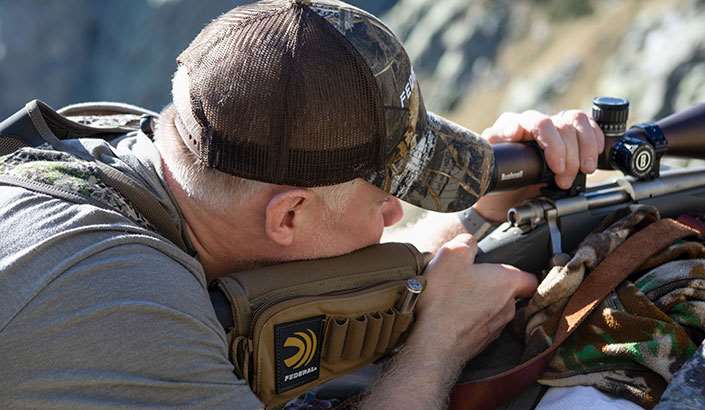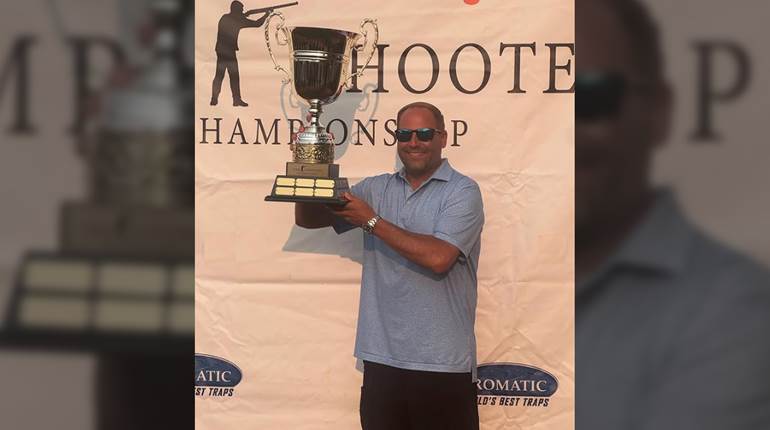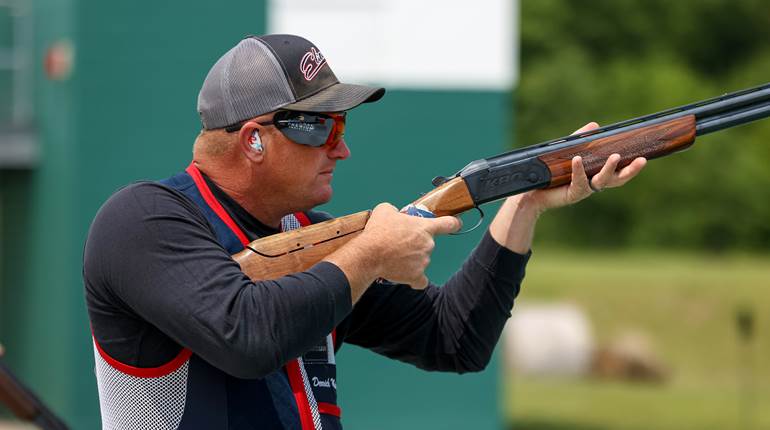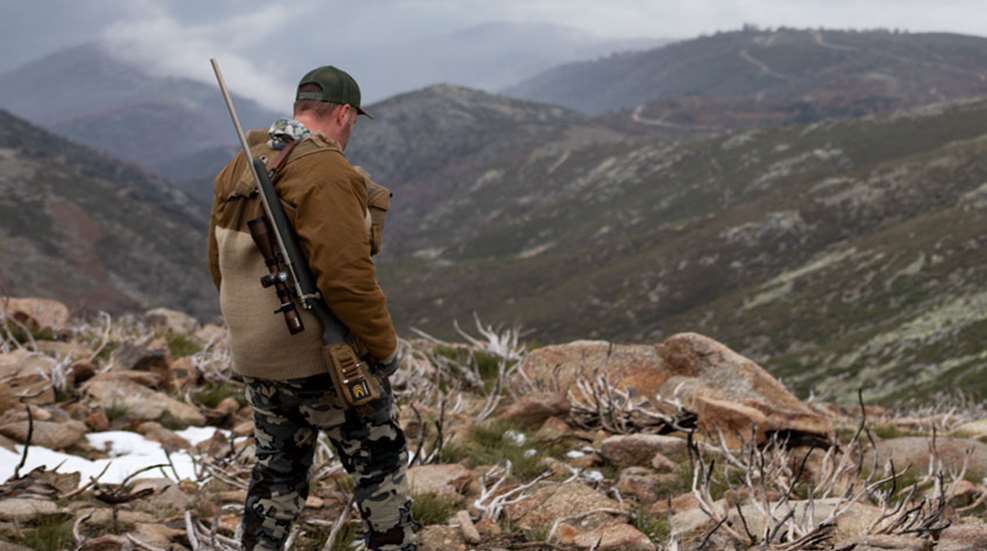
"So, Keefe, explain this to me. This new Terminal Ascent stuff is supposed to be better, but I looked at the ballistic coefficient compared to Federal’s Edge TLR, and it looks like it has a lower BC. What’s going on here?“ Those words came from my friend and colleague Jon Draper, who is the executive editor of American Hunter. He was about to head out to the range with the then-just-released Federal Terminal Ascent, and he had asked a very legitimate question.
“Well Jon, what happens when a deer steps out at a mere 25 yards? At that range, you are asking TLR to do something it simply wasn’t designed to do,” I replied. “BC matters a lot, but it isn’t everything.” Looking at the .30-cal., 175-gr. bullets used in .30-’06 Sprg., the Trophy Bonded Long Range (TLR)—which is a superlative long-range bullet—has a G1 (we’ll get to that in a minute) BC of 0.536, while Terminal Ascent’s is 0.520. Better right? Not necessarily. It depends what you want from a hunting bullet.
Today’s ballistic engineers and bullet designers are very good, indeed. They can construct a bullet that can do pretty much anything—not necessarily everything, though. Do you want it to expand at muzzle velocity? No problem, we got you. Do you want it to expand when the bullet is down below 800 f.p.s. at 1,000 yds? Yep, we can do that. But the design of hunting bullets is about limitations and windows. Some performance windows—namely penetration and expansion—are bigger than others.
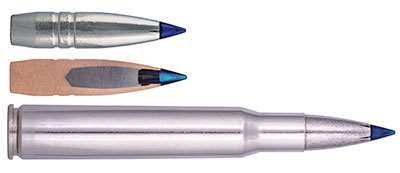
Bullets, generally, have fallen into two categories. They can be accurate or they can be tough. The line between those two performance characteristics has been blurring, and those, at times contrary, goals converge with Terminal Ascent. Starting with an already tough bullet, a series of features that improve external ballistic performance have been added up to an impressive whole.
Ballistic coefficient (BC) is a measure of the bullet’s ability to overcome air resistance while in flight. For many years there was really just one BC, which is referred to as G1 these days, based on bullet profiles of a previous generation, often with flat bases. Today, there’s a different model, the G7, based on more ballistically efficient boattail bullets, and they behave differently in modeling than G1s, but it is typically a numerically lower value.
The fact that Federal provides both G1 and G7 numbers for Terminal Ascent lets you know that these bullets are, indeed, designed for long-range use. But, as we shall see, they can do the job in up-close, high-velocity impacts as well.
Building Federal Premium's Ultimate Hunting Bullet
Federal uses the largest range of bullets in its factory-loaded ammunition of any maker, including those from Barnes, Berger, Hornady, Nosler, Sierra, Swift and Woodleigh, depending on the application. Federal, of course, also makes quite a few of its own.
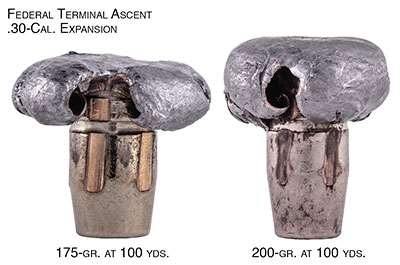
Trophy Bonded bullets go back to Jack Carter’s search for a projectile that would both penetrate and perform under tough circumstances. Carter’s company was eventually acquired by Federal. In addition to the original Trophy Bonded Bear Claw, there are the Trophy Bonded Tip, Trophy Copper, Trophy Bonded Sledgehammer and Edge TLR. It’s kind of an in-house premium brand within a company that already has “Premium” as the back half of its name. And it is with the Trophy Bonded family that Terminal Ascent began.
“We have put all of the best features of any bullet all into one bullet,” Federal’s President Jason Vanderbrink told me. Like the Trophy Bonded bullets, Terminal Ascents have a lead core chemically bonded to a solid copper shank, and then the jacket is formed over the core. It’s a tough bullet designed for deep, in-line penetration, but it was not always the winner when it came to BC. That was bettered with the Trophy Bonded Tip, which, you guessed it, included a polymer tip. Then came the Edge TLR, which was designed to be accurate but to perform penetration-wise as a hunting bullet at long range.
With the Edge TLR, Federal put its proprietary AccuChannel grooves on the shank, and such grooves are intended to decrease barrel wear and reduce fouling. Another thing they do is allow rifles that may not prefer monolithic bullets to be more accurate. Such grooves are not new, but Federal improved them by putting a radius on the rear edge, allowing the bullet to move through the air more efficiently, reducing drag. It also allowed Federal to take the number of grooves from three to two—which improves the BC by about 5 percent.
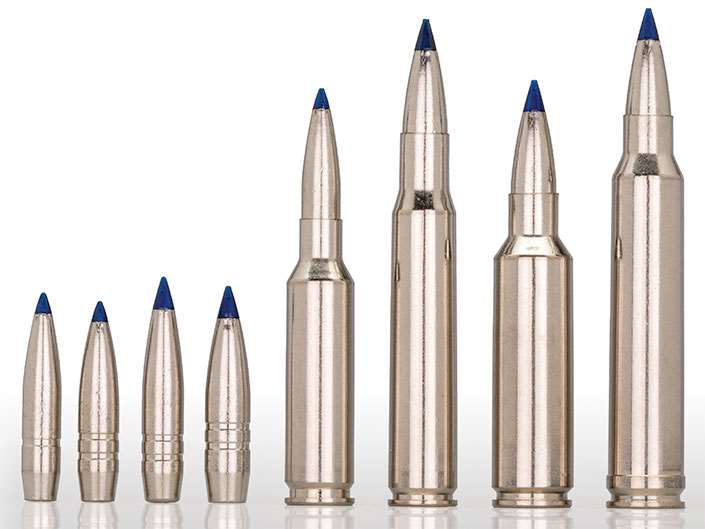
Another feature is the SlipStream tip, which we first saw on the Trophy Bonded Tip and Edge TLR. Obviously, plastic tips on bullets have been around since the pioneering Nosler Ballistic Tip, but SlipStream is different because it actually has a tubular, hollow cavity within the tip itself.
The nose is closed off to raise the bullet’s BC, but it breaks off and then helps initiate expansion at velocities as low as 1400 f.p.s. The polymer material of the Slipstream does not deform in flight, and it doesn’t start softening until it reaches 434° F, which is higher in temperature than the bullet will reach in flight.
Terminal Ascent bullets have a small-for-diameter meplat and a secant ogive to increase the BC, but a closer look at the ogive reveals skives put in during the manufacturing process that control expansion of the petals under impact. The number of petals varies from bullet to bullet.
Catching rifle bullets in ballistic gelatin isn’t something we are set up to do, but in looking at Federal’s high-speed photography it’s clear that, despite their accuracy-enhancing features, these bullets indeed produce that straight, deep penetration that Jack Carter was looking for in the first place. The 175-gr., .30-’06 Sprg. Terminal Ascent load’s window for reliable expansion ranges from near its muzzle velocity of 2750 f.p.s. down to 1350 f.p.s., which allows for expansion of the bullet from close range out to beyond 600 yds. It’s not magic, just solid engineering.
As to weight retention, it is said to be in the 90 percent range, with part of the loss being the SlipStream tip itself. In the field, as recounted a little further down in the story, no one I know has recovered one of the bullets in game. They are designed to expand and penetrate, and that is what they do, in spades.
Determined to test the available Terminal Ascent loads at realistic hunting ranges with a variety of rifles, I enlisted the aid of several colleagues (more on that later). During that shoot we recovered a few examples from the earthen backstop at both 100 and 300 yds. And while dirt is not a good ballistic test medium—it can be quite destructive—it managed to preserve some bullets that exhibited pronounced and uniform expansion, with petals remaining peeled fully back.
Other premium features built into Terminal Ascent include nickel-plated cases, which are not only shiny and pretty, but provide increased lubricity in a rifle’s action compared to standard brass and are more resistant to the elements. And then there is nickel-plating on the bullet itself, which helps give the loaded cartridge its distinctive appearance.
After looking into the barrels of the rifles we tested to determine if the bullets’ nickel plating reduced fouling, it appeared as though there was some present but that it was a different color than typical—as in copper and nickel.
I had to ask Federal what the nickel added to a bullet’s internal, external and terminal ballistics. It turns out it’s … cosmetic. Indeed, it makes the all-nickel bullet and case with its distinctive blue tip stand out from the crowd—especially when contrasted with the bright blue of the SlipStream tip. Federal also uses its Gold Medal primers and then uses a primer sealant to make sure no moisture gets into the case.
Propellants are optimized for each chambering, and velocities tend to run on the higher side for bullet weights, which tend to be heavy-for-caliber. There were signs that the loadings are stout—although we experienced no sticky bolts whatsoever, we did note slight flattening of primers in their pockets with all loads tested save the 6.5 mm Creedmoor.
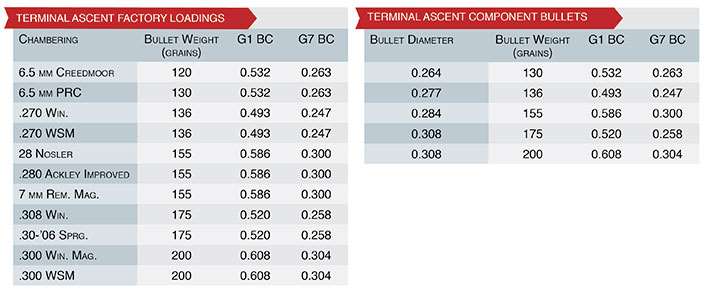
“We Have A Nice Horse For You To Ride”
I was invited by my longtime friend Jason Nash, Federal’s senior marketing director for ammunition, to hunt with him and Vanderbrink for the Spanish ibex grand slam in December of last year with Francisco Rosich’s Hunt Trip Spain. My schedule didn’t permit me to do the entire grand slam, but I was able to hunt the Gredos and Southeastern—two of the four.
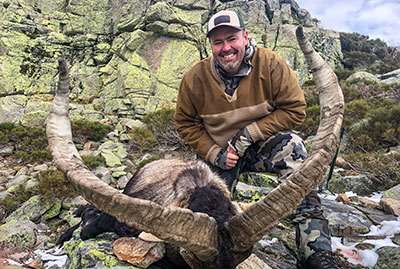
I will pretty much go anywhere with Nash, whom I have known for about two decades, but I had not really gotten to know Vanderbrink yet and wasn’t sure what to expect. But I soon found that anyone who spends a week or two with him will likely get to know him very well. He’s not the typical company president and is one of the most energetic guys you’ll ever meet.
There’s no middle ground with Vanderbrink—you’re either all in or you’re out—and that is how he tasked his engineers to design Terminal Ascent. Although he heads one of the big three ammunition makers, when workers in Anoka called in sick or were quarantined with COVID-19, Vanderbrink could be found with his sleeves rolled-up, packing ammunition in the plant alongside his workers. He is a gun guy, and a hunter through and through. He just happens to be really good at sales and running an ammunition company, too.
Vanderbrink put his money where his mouth is on Terminal Ascent last hunting season. Using a Weatherby Mk V in 6.5 mm-284 Norma with a 130-gr. Terminal Ascent load from Federal’s Custom Shop (federalpremium.com), he took a desert big horn sheep at 116 yds., a Yukon moose at 360 yds., a Utah mule deer at 156 yds. and a Texas whitetail at 140 yds. In Spain, he took the Spanish ibex grand slam with a Beceite at 100 yds., a Ronda at 100 yds., a Southeastern at 240 yds. and a Gredos at 330 yds.
Upon arriving in Spain, it took a day to get the jet lag out of us, but as we were sitting down after dinner Inigo Falache—one of the finest guides with whom I have ever hunted—turned to me and said, “We have a nice horse for you to ride.”
Well, I’m sure the horse—by the way, its name is Monaco—is very nice, but what neither Falache or Monaco knew was that the last time I was on one was at a third-grade birthday party. And if there’s anything more terrifying than climbing a mountain, it’s getting on a horse to climb a mountain, then letting the horse climb it for you when you have a fundamental ignorance of the ways of both horses and mountains.
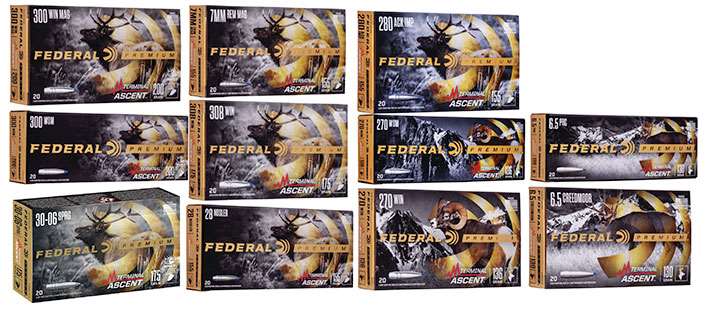
We started out hunting in the Encinoso hunting area for Gredos ibex. To be forthright, thanks to the altitude, lack of oxygen, terrain, dehydration and my admitted lack of conditioning, it was the hardest day of hunting I have ever experienced. As the sun was already behind an adjoining mountain, it took three shots to anchor a nice Gredos, the first of which was a little far back at 346 yds.
Not the rifle or bullet’s fault, it was totally mine that it didn’t drop on the first shot. The third was just to make sure it went no further up or down the mountain. All were pass-throughs with no bullets recovered. This was followed by a moonlight trip back down the mountain—if it weren’t for Inigo and Monaco, I’d probably still be up there. A few days later in the Sierra Nevada on my Southeastern ibex, thanks to Falache and Alfonso Cabrera, it was a much easier one-shot 185-yd. chip shot from the prone. Best of all, no horses were involved.
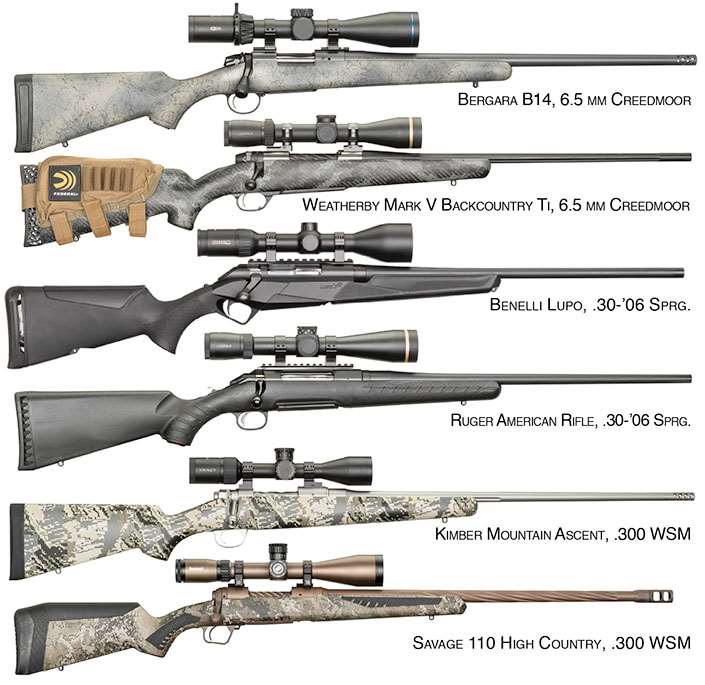
Tennis Balls Should Be Very Afraid
Back home, and some months later, I organized a trip to Peacemaker National Training Center in West Virginia to see how Terminal Ascent factory loads would perform out of six hunting rifles in three different chamberings. The guns ranged from lightweight mountain rifles to heavy-barrel guns and were shot by four NRA staffers—Editorial Director John Zent, Senior Executive Editor Brian Sheetz, Associate Editor Christopher Olsen and myself.
As Sheetz noted, the group had more than 100 years of combined experience testing rifles and ammunition. We fired five of the six rifles at 100 yds.—Zent had already done the accuracy work on the Benelli Lupo for his story on p. 50 of this issue—recording the results of five consecutive, five-shot groups with each rifle. There were no ringers thrown in, as these guns were scoped up and then chronographed and rough zeroed before we departed.
We selected: a Kimber Mountain Ascent and a Savage Model 110 High Country for the 300 WSM; a Benelli Lupo and a Ruger American Rifle in .30-’06 Sprg; and a Bergara B14 and the same Weatherby Mark V Ti I took to Spain, both in 6.5 mm Creedmoor. All the guns were fired with the scopes listed on the next page—24X target scopes on each would have made the job a little easier, but would not have been as practical.
We had the guns bagged both front and rear for the accuracy portion, and at times bullets were in the same hole or tightly clustered for three shots, but our five-shot group protocol is tough—especially for guns with feathery barrels.

But that was only part of what we are there to accomplish. We then began shooting steel plates, some as a small as 6", at 300 yds. It was at this longer range that Terminal Ascent really shined. With the Weatherby I was able to ring the 6" gong with near-monotonous regularity. I went nine for 10.
We then moved to the tennis balls suspended on strings from the target frames. Olsen went four out of five with the Lupo, and the other rifles were not far behind. Just in case you’re wondering, a tennis ball by regulation only measures 2.575" across. Each of the rifles was capable of making that shot, time after time.
Conditions, to be frank, were far from ideal. Wind wasn’t a factor, until the thunderstorms rolled in toward the end of the day, but we had another issue to face. As we went to have a look at the steel during a break, we hopped in my truck and its thermometer indicated 100° F. By the time we got down to the target frames, it cooled to a far more palatable 99° F with only 42 percent humidity.
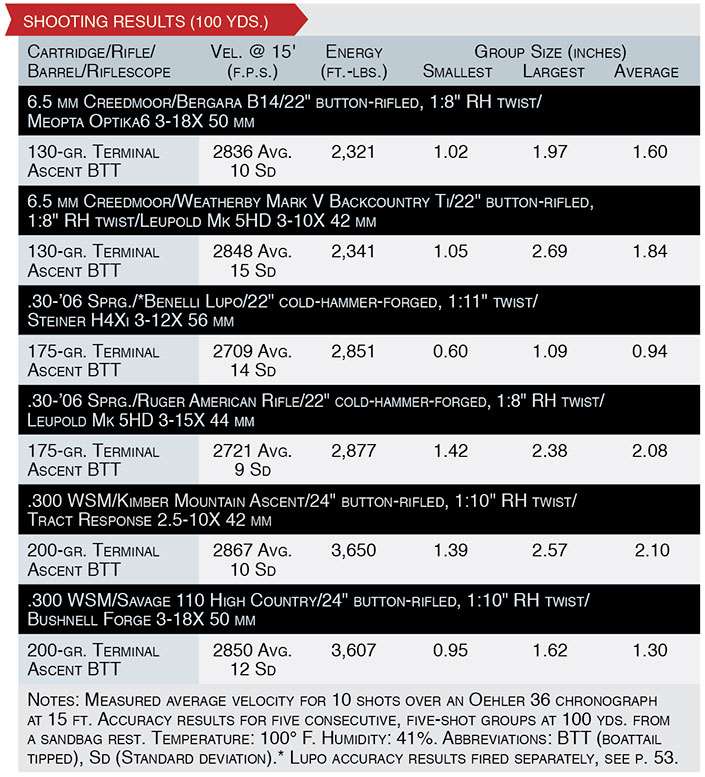
That heat meant that it was difficult to get the barrels to really cool down, but given the conditions I was pleased with the groups and even more so with the performance of the ammunition. There were no malfunctions of any sort. Of the 620 total rounds brought to the range, we returned with only one box of .300 WSM that seems to have been overlooked.
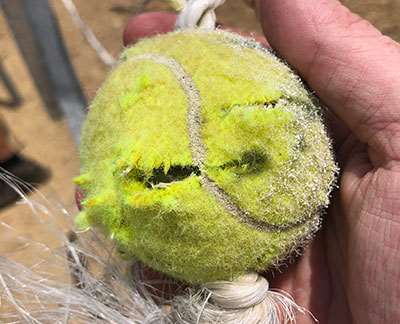
From non-bench positions, we also worked the steel. Olsen rang the 24" plate five times in a row offhand with the Lupo. I have fired a lot of hunting rifles and ammunition over the years, and I was impressed by the overall performance of Terminal Ascent. On our way out, we let the range officers know they were going to need some new tennis balls.
There are bullets with higher BCs in Federal‘s catalog, as well as bullets that will penetrate deeper, but it is the blending of those two things that makes Terminal Ascent likely the most broadly applicable big-game hunting bullet developed to date. It has nearly the ballistic performance of a match bullet without the fragility.
And that box of .300 WSM? Well, let’s just say it won’t make it past this season as it shoots sub-minute of angle through my Melvin Forbes Ultra Light Arms.
